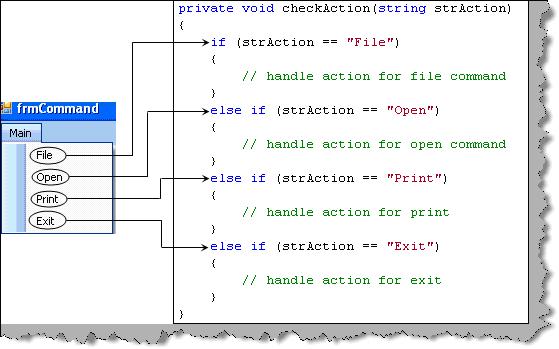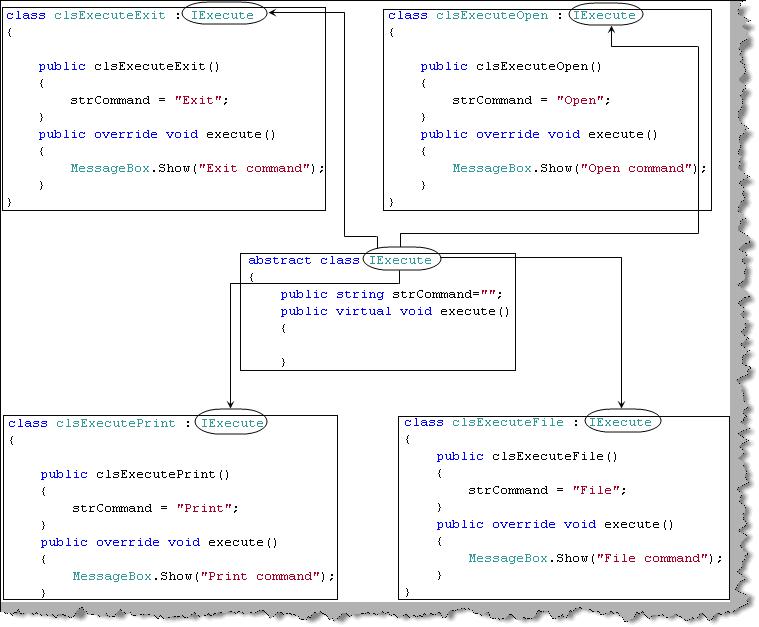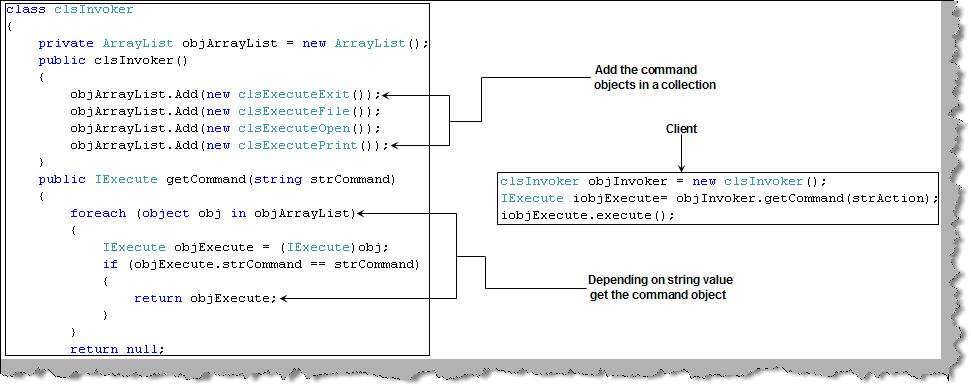Command pattern allows a request to exist as an object. Ok let’s understand what it means. Consider the figure ‘Menu and Commands’ we have different actions depending on which menu is clicked. So depending on which menu is clicked we have passed a string which will have the action text in the action string. Depending on the action string we will execute the action. The bad thing about the code is it has lot of ‘IF’ condition which makes the coding more cryptic.
 Figure: – Menu and Commands
Figure: – Menu and Commands
Command pattern moves the above action in to objects. These objects when executed actually execute the command.
As said previously every command is an object. We first prepare individual classes for every action i.e. exit, open, file and print. Al l the above actions are wrapped in to classes like Exit action is wrapped in ‘clsExecuteExit’ , open action is wrapped in ‘clsExecuteOpen’, print action is wrapped in ‘clsExecutePrint’ and so on. All these classes are inherited from a common interface ‘IExecute’.
 Figure: – Objects and Command
Figure: – Objects and Command
Using all the action classes we can now make the invoker. The main work of invoker is to map the action with the classes which have the action.
So we have added all the actions in one collection i.e. the arraylist. We have exposed a method ‘getCommand’ which takes a string and gives back the abstract object ‘IExecute’. The client code is now neat and clean. All the ‘IF’ conditions are now moved to the ‘clsInvoker’ class.
 Figure: – Invoker and the clean client
Figure: – Invoker and the clean client